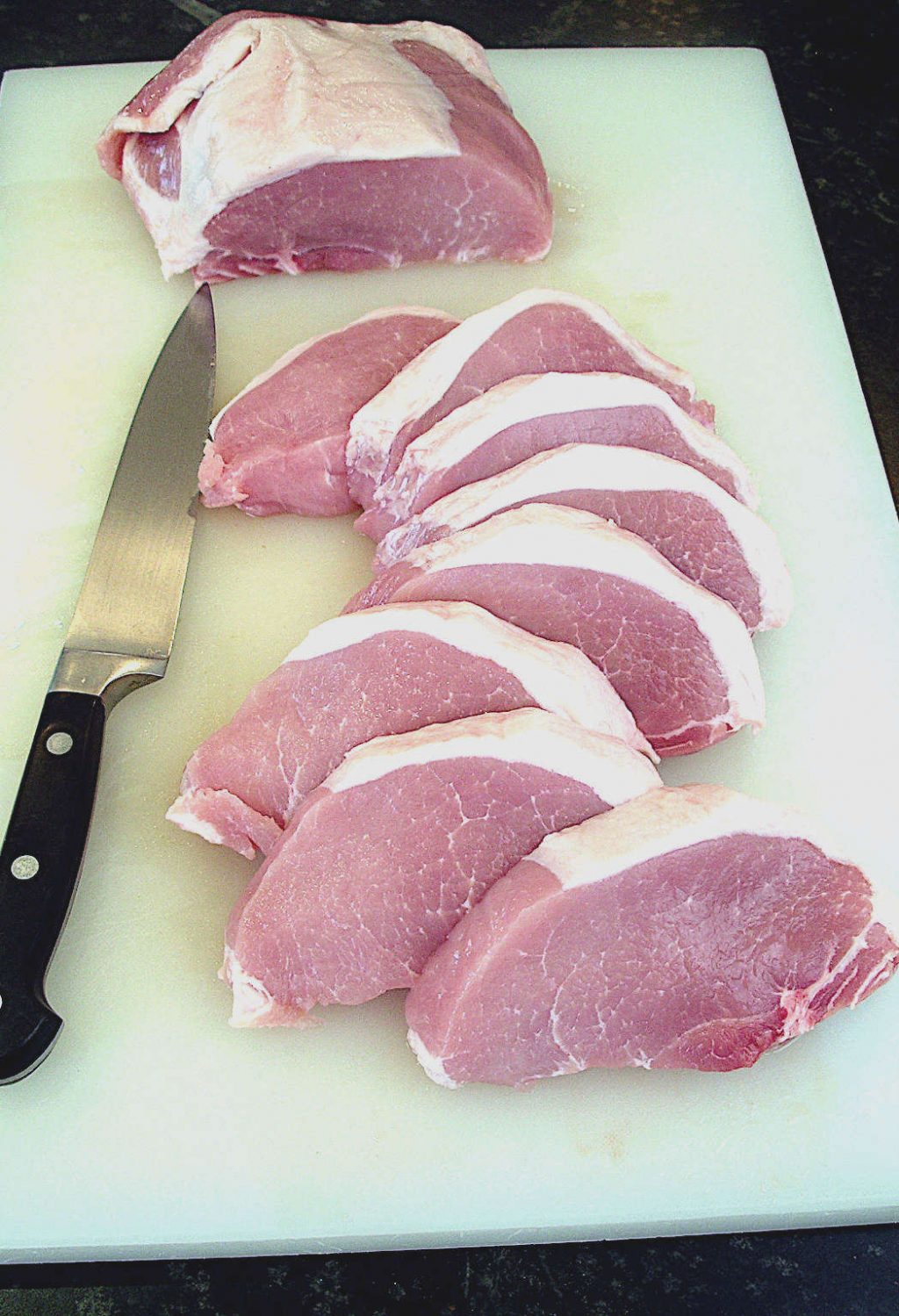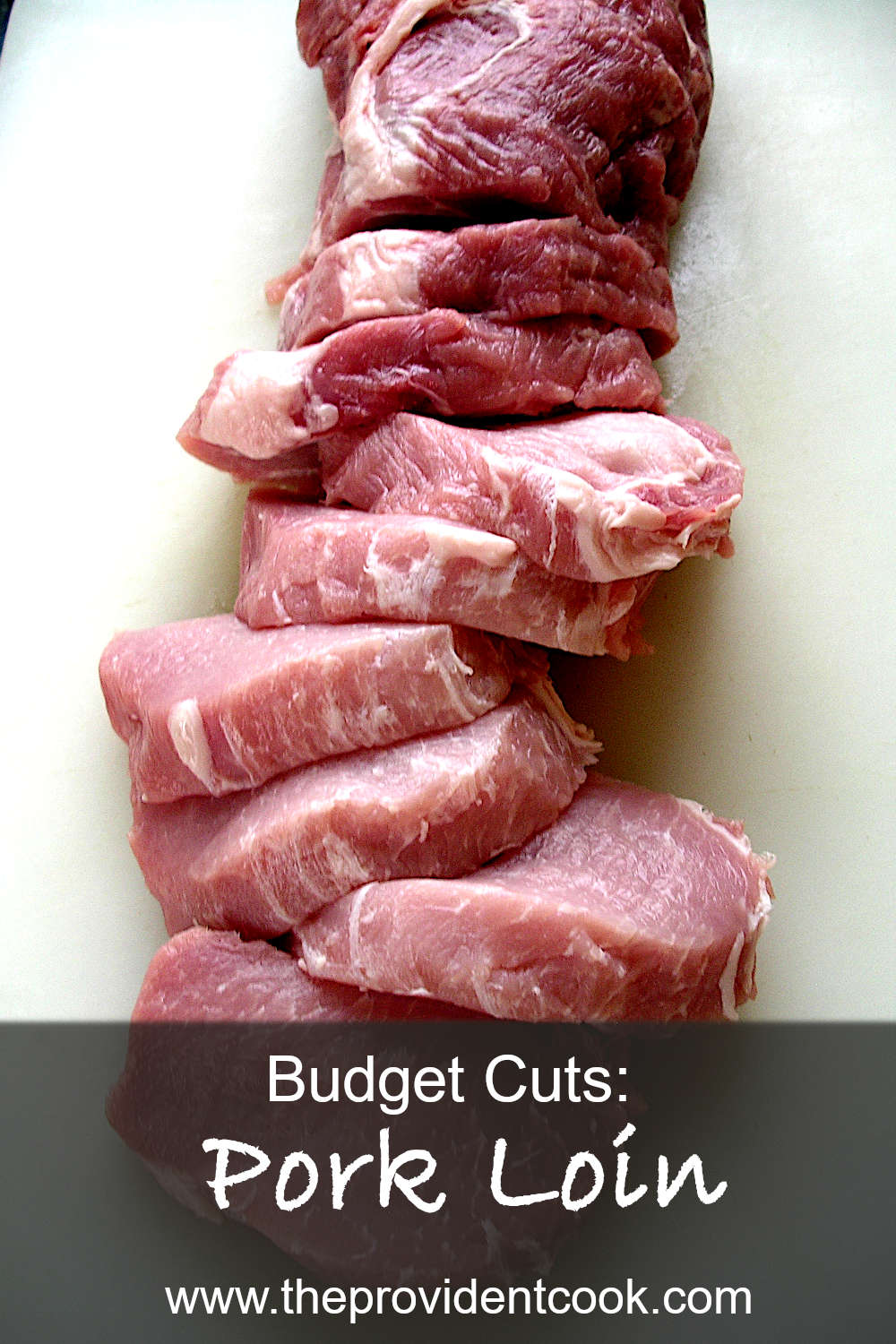A whole pork loin can seem a bit intimidating at first because of its sheer size. But its relatively low cost and wonderful versatility make it one of my favorite ‘budget cuts.’
A boneless whole or half pork loin is really a relatively thrifty cut! It has no waste from bones, and usually only a small bit of fat to discard. It’s so easy to cut it into center-cut pork chops to freeze for later use, and you can get a couple of ‘bonus’ pork roasts from each end if you wish. BTW, pork loin isn’t at all the same thing as pork tenderloin. A whole loin will typically be in the 6 to 8-pound range, whereas tenderloins are far smaller (one to one-and-a-half pounds, usually).
I sometimes see whole or half loins on sale in the $1`.50-per-pound range. But with the shortages lately, I don’t see them on sale quite as often. Even at full price, it’s a fairly inexpensive cut though.
To give you an idea, I bought the seven+ pound loin pictured in this post for $2.74 a pound at a big-box membership store. From that, I got 16 center-cut loin chops (½-inch thick) and two 1½ to 2-pound roasts. That works out to about 24 servings, at less than a dollar each. (Compare that with the cost of center-cut pork chops from the meat counter. My local grocery stores are charging $5.99 per pound or even more for them!)
All About Pork Loin
Okay, so you’ve decided to buy a pork loin – now what? The first thing you need to know is that on a whole loin there will be two ends – the loin end and the sirloin end. Sometimes the packaging will have this marked for you, along with handy cutting instructions. Just in case it doesn’t, here’s a pic of the two ends:

The sirloin end, on left, has more fat and darker meat, and it also contains some connective tissues. The pork loin end, at right, is much leaner and paler. Depending on your preferences, you may want to use more of the loin end as chops, and reserve the sirloin end for a nice pork roast.
The second thing to keep in mind is the silverskin. As its name implies, it’s a thin, silvery membrane that you’ll find on pork loins and tenderloins, as well as beef, mutton, and lamb tenderloins. To me, it looks kind of like the packing tape that has the threads in it – and it’s about as inedible as the tape would be!
There’s quite a good video on removing silverskin over at foodschmooze.org, and I show a bit of the process below:

Insert a sharp, thin knife just under the silverskin at any point, and holding the knife blade at a slight upward angle, cut it away from the flesh. (Try to remove as little of the pork meat as possible.) It will take several cuts to remove it all, but it’s important – it’s a bit unpleasant to bite into a stray bit of silverskin!
Cutting it Down to Size… or Not
Now the pork loin is ready to use. Here in Midwest, it’s pretty common to roast or grill one or more whole loins to serve a large crowd. (Easy instructions should be on the package.) I often roast a half-loin to use in sandwiches – sliced thinly, with a zippy mayo-based spread and lettuce, onion, etc.
Usually, though, I’ll cut a whole pork loin into chops or roasts to use across multiple meals as I’m showing here. I generally cut chops that are a half-inch thick because I often use them in dishes like Parmesan-Herb Pork Cutlets. But you can cut them thinner to use as a breakfast side, or thicker for grilling. It’s your choice!
Pork loin is such a huge cut that I find it easier to work with half of it at a time. Simply cut it in half crossways, then start cutting your chops from the cut end. I typically stop cutting chops when I get within about four inches of the loin or sirloin end. That leaves me with a small roast from each end as well as the pork chops I’ve cut.
If you prefer, you could instead cut off a larger roast from the loin end (at least 12 inches long) and use it to make Home-Cured Canadian Bacon or a roast for dinner or sandwiches. For the sirloin end, I sometimes cut it into one-inch cubes to use in a shish kebab. Basically, you can break down the loin in any way that fits your cooking style and how you plan to use it. Freeze in serving-size portions whatever you won’t be using immediately.



